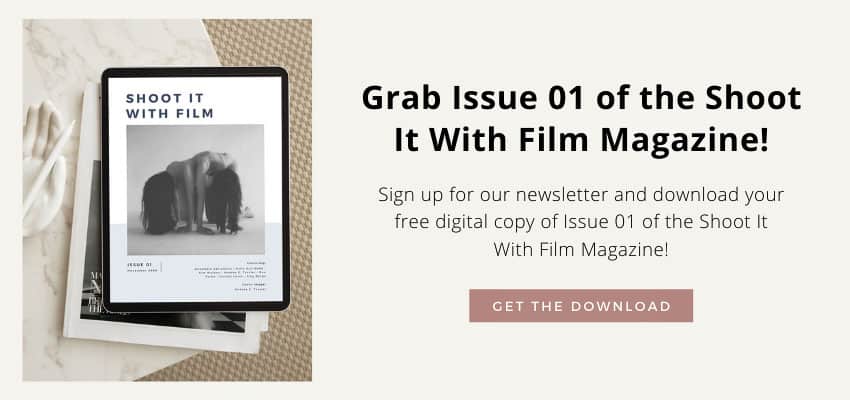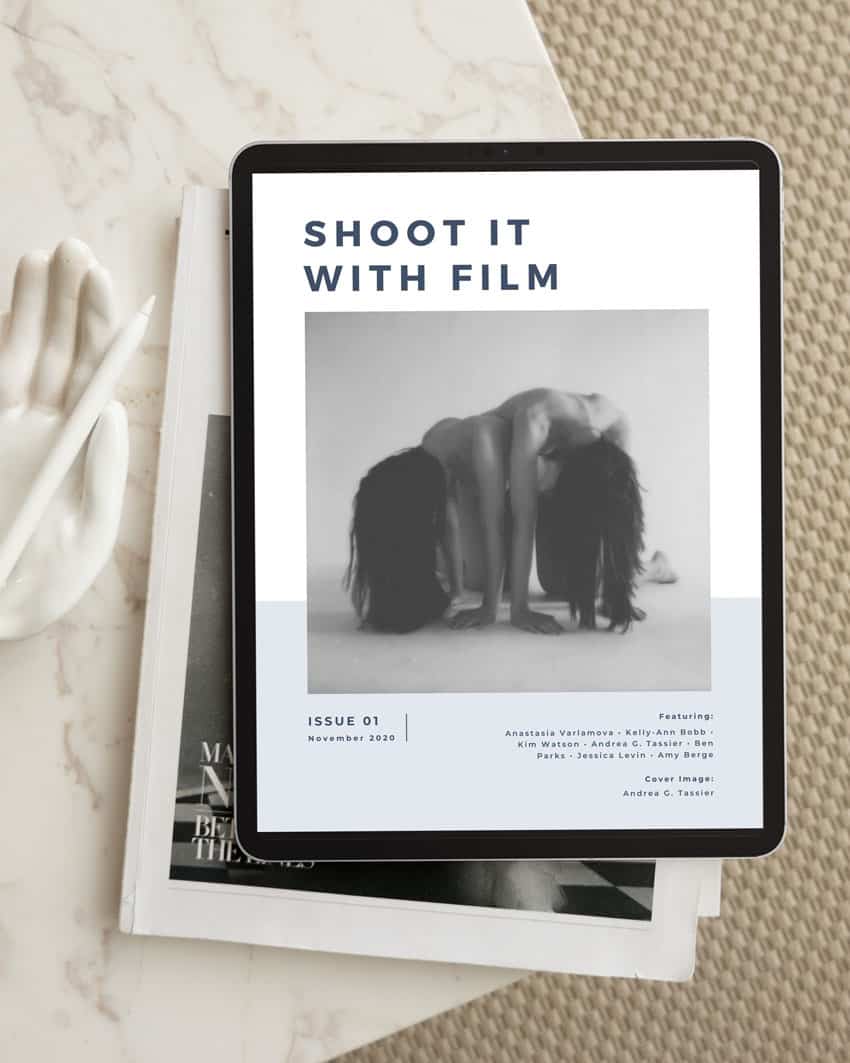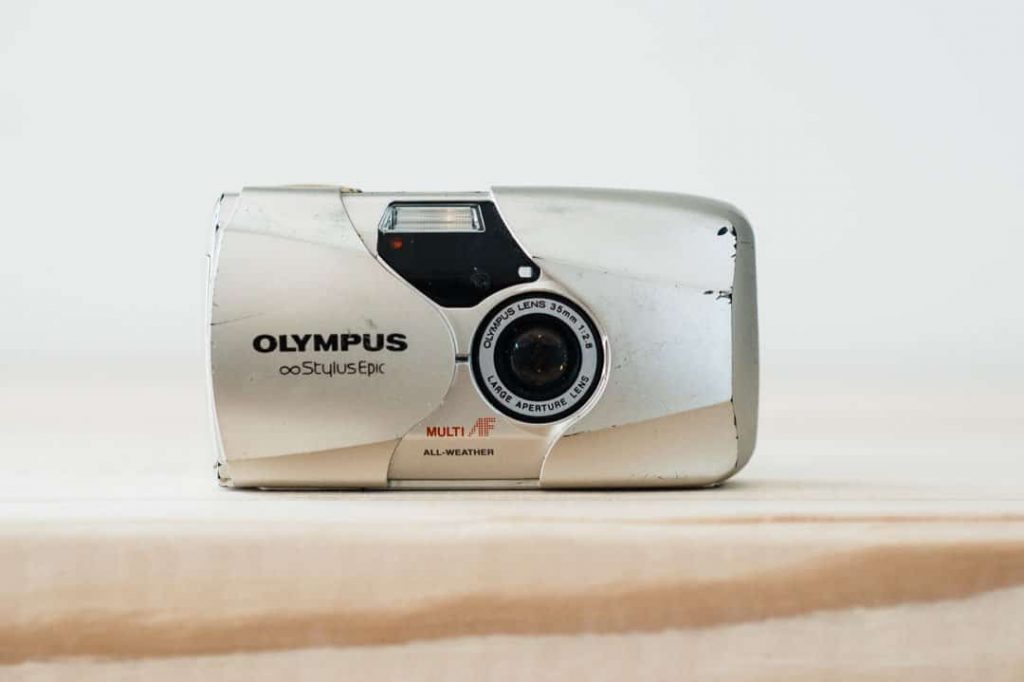
Written by Drew Evans
Point and shoot film cameras. They’re an enigma — simultaneously gimmicky and practical, all at once.
But regardless of the latest trends (looking at you, Kendall Jenner), point and shoots certainly have a deserved place in camera bags of plenty of film photographers.
I’ve had a handful of different point and shoot cameras over the years, both digital and film, all of varying price and quality. Everything from an Olympus XA2 to a Contax T2 has been in my bag at varying points.
Just like any camera, not all point and shoots are built equally, so it’s important to understand what you’re getting into and their benefits, especially as you go out to shoot.
Here are a few tips for getting better images on your next point and shoot adventure:

1. Know the Technical Limitations of Point and Shoot Film Cameras
I’ve personally found that most point and shoot film cameras have quirks.
Every point and shoot I’ve owned has different technical abilities and limitations, and they all impact the shooting experience — and the subsequent results — differently.
Let’s take the Contax T2, for example. It has a beautiful f/2.8 Zeiss lens, but when using the camera in aperture priority, you can’t manually shoot at f/2.8. I knew, for the vast majority of the time, using my Contax T2 meant rarely shooting wide open. And while there’s absolutely nothing wrong with that, it did limit when and where I could use it.
It also has a great on-camera flash that’s usable and quite functional, whereas the Olympus XA2 has an add-on flash that I personally have never quite loved the look of. I’m not a big flash user to begin with, but I wouldn’t expect to use the built-in flashes like professional lighting.
Another common limitation of many point and shoots is the inability to manually set your ISO. There are workarounds, but if you’re not ready to physically change the DX codes on your film every time you load up, you may not have much choice. The Contax has both an automatic mode and aperture priority, but there is no functional ISO setting to change, so I was always shooting at box speed.
The more you understand how your camera is limited, the easier it will be to master.



2. Test to Get Repeatable Results, Every Time
That leads me to the next tip: figure out how to get repeatable results every time.
Quirks aside, point and shoots can be very, very good cameras, especially in the right circumstances. If you’re able to figure out those scenarios early on, your camera will feel like second nature.
When I first got my Contax T2, I took it everywhere. The 38mm focal length was basically 35mm (so I thought), and the lens is very sharp, so I figure it’s a great all around camera. And while that’s mostly true, my first few rolls were average at best.
I learned pretty quickly that 38mm is not 35mm, and it took some adjusting to really figure out what my images would look like after development. I had gotten used to every other camera, where I could swap out focal lengths depending on the situation. With point and shoots, you can’t, so I had to get used to taking a few steps forwards or backwards to get the right framing.
That, coupled with the automatic exposure settings, meant I was pretty limited on how to shoot. I couldn’t manually control everything, so I was really at the mercy of the camera. So I started exclusively shooting Kodak Portra 400, hoping that I could really master one film stock and one ISO to get repeatable results.
I tested it in the morning, under direct sunlight, and at dusk. That way, I could take out the Contax at any moment, in any light, and know exactly what I would get.



3. Stick to a Certain Style with Your Point & Shoot Camera
Given everything we know about point and shoot film cameras, it doesn’t feel to crazy to say they’re not for everyone, nor are they for every photographic style. I think the general consensus would be that you probably shouldn’t take one to a fashion portrait shoot and expect extremely high quality results.
During my first week with the Ricoh GR1, I took it on a hike through the mountains near Half Moon Bay in Norther California. I left my Leica at home, thinking the Ricoh could cover me for very good landscape shots at a fraction of the weight. And while the results were fine, the quality wasn’t nearly what I had hoped for. Not to say the Ricoh isn’t great (it’s wonderful), but the vast coastal seascapes didn’t quite turn out when I had limited exposure controls and a wider 28mm lens.
But when I took the camera out a few weeks later through the streets of San Francisco, it immediately clicked. The camera was far better for street photography, and the focal length was perfect for what I needed.
I realized that my point and shoot cameras were far better for photowalks around the city, so I started leaving them at home when I knew I would be shooting landscapes or portraits. And while that felt limiting at first, it made the cameras far better for those specific instances.



Final Thoughts
Point and shoot film cameras are situational — and in the right environments, can be better than even your highest quality rangefinders. But they also take time to learn and understand. Unlike interchangeable lens cameras where have all of the controls and focal lengths at your disposal, and they can really work in whatever situation you drop them into.
But when you figure out when a point and shoot works well, their compact builds and functional abilities (even if limited) are unmatched.



Thank you so much, Drew! Drew is a regular contributor here at Shoot It With Film, and you can check out his other articles here, such as Guide to Picking the Perfect Lens for Your Camera Kit and 3 Tips for Getting the Most Out of Cinestill BwXX Film.
You can also check out more of Drew’s work on his Instagram.
Leave your questions about how to get better images with point and shoot film cameras below in the comments!








Blog Comments
Gary
February 9, 2024 at 2:43 pm
Great advice and photos. I hadn’t really considered that, given the inherent limitations of p/s, their uses should be limited also. Play to their strengths and avoid their weaknesses.
ed
February 10, 2024 at 1:00 pm
Interesting article. I have gotten some great photos from point and shoots as well as expired disposable cameras. I have several point and shoot cameras that have bulb settings and double exposure modes. I take one or 2 on every photoshoot.
Carla
February 13, 2024 at 11:01 am
Here I was thinking “point and shoot” would include such analog gems as Holga 135 or Lomo’s La Sardina. I was really looking forward to tips on those quite basic point and shoot cameras, not cameras that cost upwards of $1000. Maybe another article?
shootitwithfilm
February 13, 2024 at 1:23 pm
Hi Carla! Here’s some tips for working with the Holga: https://shootitwithfilm.com/5-tips-for-shooting-with-a-holga-120n/ and you can check out all of our toy camera articles here: https://shootitwithfilm.com/tag/toy-cameras/ We’ll also be sharing a review of the Holga 135 at the end of next month, so keep an eye out for that!
Taylor Blanchard
February 26, 2024 at 5:38 am
Hi Carla – I wrote an article on the Reto Ultra Wide and Slim, which is an incredible point and shoot camera for ~$30. https://shootitwithfilm.com/reto-ultra-wide-and-slim-review/